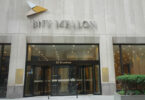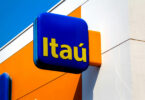Today Standard Chartered and Synpulse released a report on tokenized real world assets (RWA) with a particular focus on trade finance. They estimate the tokenization market will reach $30.1 trillion within ten years, with trade finance making up 16% or $4.8 trillion. The segment will be amongst the top three classes of tokenized assets globally.
The so-called trade finance gap is $2.5 trillion, representing slightly more than 10% of the global merchandise trade of $24 trillion in 2023. However, the bank observes that only 80% of the export market is currently financed, so there could be another 10% undisclosed trade finance gap. In that case, the gap is closer to $5 trillion and growing, given global trade is forecast to reach $32.6 trillion by 2030.
As an investable asset class, trade finance is attractive. Default rates are typically a fraction of one percent. Even in default cases, the recovery rates are high – close to two thirds or almost 100% where there’s a guarantee. Standard Chartered made the case for the ongoing role of banks from a trust perspective. They have a point. Some of the credit advanced against trade finance in the DeFi world has experienced higher default rates.
We recently received an announcement from a startup that had tokenized hundreds of millions of dollars of invoices. Given its trivial to generate invoices, the key question is who verified the invoices. In trade finance, that’s ideally a bank that’s done some due diligence and/or the buyer. And one must ensure that it is the buyer, not just someone faking it.
Meanwhile, Standard Chartered outlined two recent use cases in which it has participated, which both used the public Ethereum blockchain.
Tokenized trade finance and asset backed securities
As part of Singapore’s Project Guardian tokenization trials, it created a tokenized asset backed security (ABS) with the backing of trade finance tokens. The report revealed that the ABS was for US$500 million. Previous reports stated the tokens were listed on SGX as part of the digital bond sandbox. With the evolution of Basel rules for banks, all banks will increasingly need to remove trade finance assets from their balance sheet, with ABS being one of the routes to achieve that.
The individual invoices are represented as NFTs held in a portfolio as part of a special purpose vehicle. Various tranches of tokens with different risk scenarios were issued to investors. Because of the short term nature of trade finance, when a trade finance debt matures, it has to be replaced with another within the ABS. The combination of AI and tokenization will help automate the replenishment of these types of asset backed securities.
Programmable tokens for supply chain finance
The second initiative was Project Dynamo, which we previously wrote about. It involved Digital Trade Tokens (DTT), which are stablecoins that the buyer passes on to their supplier. The supplier can then pass the tokens down their supply chain ad infinitum. In all cases the funds are only usable when conditions are met, such as delivery.
Trade finance does indeed seem a natural bedfellow for tokenization and blockchain, given the shared ledger, the immutability that helps with trust and the potential to reach a wider pool of investors. Standard Chartered is still convinced of this despite having its fingers burnt. It invested in two private blockchain initiatives Marco Polo and Contour, which both shuttered. Additionally, it was a member of IBM and Maersk’s TradeLens, which was shut down.
The report emphasizes the need for an open network. One quote may be a nod to the global Layer 1 network that Singapore is working on:
“We recognise the immediate need of an open and permissioned multi-asset and multi-currency digital assets infrastructure that complements traditional markets. In contrast to the closed-loop and analog markets of the past, the ownership and utility are shared between a broader range of market participants, striking a balance between inclusiveness and security.”






